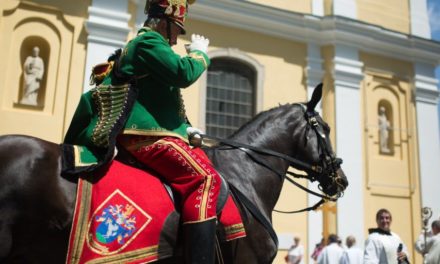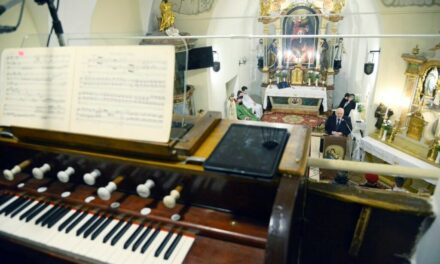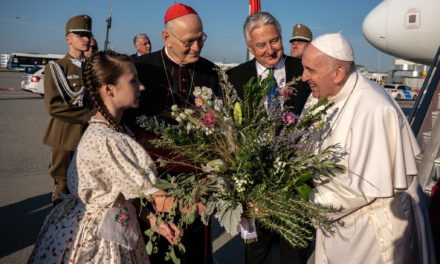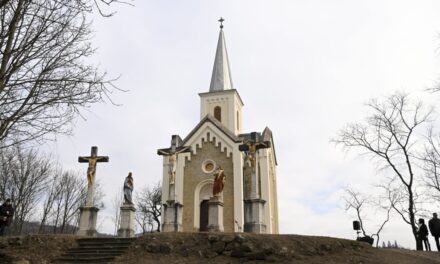About two hundred works of the works of the most outstanding Christian Hungarian contemporary artists of the Carpathian Basin and the motherland are presented in the general art exhibition entitled The Heritage of Saint Stephen, which promotes national unity and focuses on more than a thousand years of Christian Hungarian culture.
An essential part of thinking in a united nation is the cultural unity of the Carpathian Basin. Imre Makovecz and the Hungarian Academy of Arts made the first attempt at a comprehensive canonization after 1949, and nowadays this long-awaited worthy canonization has become especially important, says Judit Józsa , ceramic sculptor, art historian, curator of the exhibition. According to him, in the past seventy years, works of outstanding quality have been created in the areas pushed beyond the border, but Hungarian art history has discovered undeservedly little of them. The Foundation for the Evangelization of Hungarians in the Carpathian Basin (KÁMME), whose primary goal is to preserve and present the Christian values of the Carpathian Basin and to support the Christian artists of the Carpathian Basin, aims to fill this gap.
The number of fifty-two exhibitors created through the invitational tender indicates that the exhibition will take place within the framework of the 52nd International Eucharistic Congress. In addition to the three works per artist, thirty artists from the collection of the National Strategic Research Institute, as well as the works of two Hungarian artists living in the diaspora, will also be on display. from the Book of Psalms, the exhibition in the lower church of St. Stephen's Basilica comes to life with a special installation, which was dreamed up by Judit Józsa, who also participates in the exhibition as an exhibiting artist. The cross-shaped installation built in the central part of the sub-church was designed and executed by Gábor Török.

Judit Rózsa/Source: Magyar Nemzet/ Gergely Vogt
The cross shining from the foundation of the ecclesia reveals itself to the visitors it welcomes and who can discover it. A museum copy of the sarcophagus of Saint István was placed in the middle, at the point of intersection. Judit Józsa believes that the works of the exhibiting artists come to life in the light of the cross and make you really go deeper and wonder. "The cross welcomes whoever enters, finds miracles in the literal and figurative sense of the word," he says.
The exhibition takes place within the framework of the Carpathian Basin Hungarian Evangelization Foundation - The Association of Christian Intellectuals (KÉSZ) Foundation and the Józsa Judit Art Foundation's program for the support of Christian creative arts in the Carpathian Basin, in cooperation with the Ars Sacra Foundation, under the patronage of President János Áder. Its visit is free, but requires a protection card and registration, which can be done in person at the Józsa Judit Gallery or HERE.
The opening event will take place on September 7 from 7 p.m., where Miklós Kásler, Minister of Human Resources, will also give a speech.
Source and featured photo: magyarnemzet.hu












